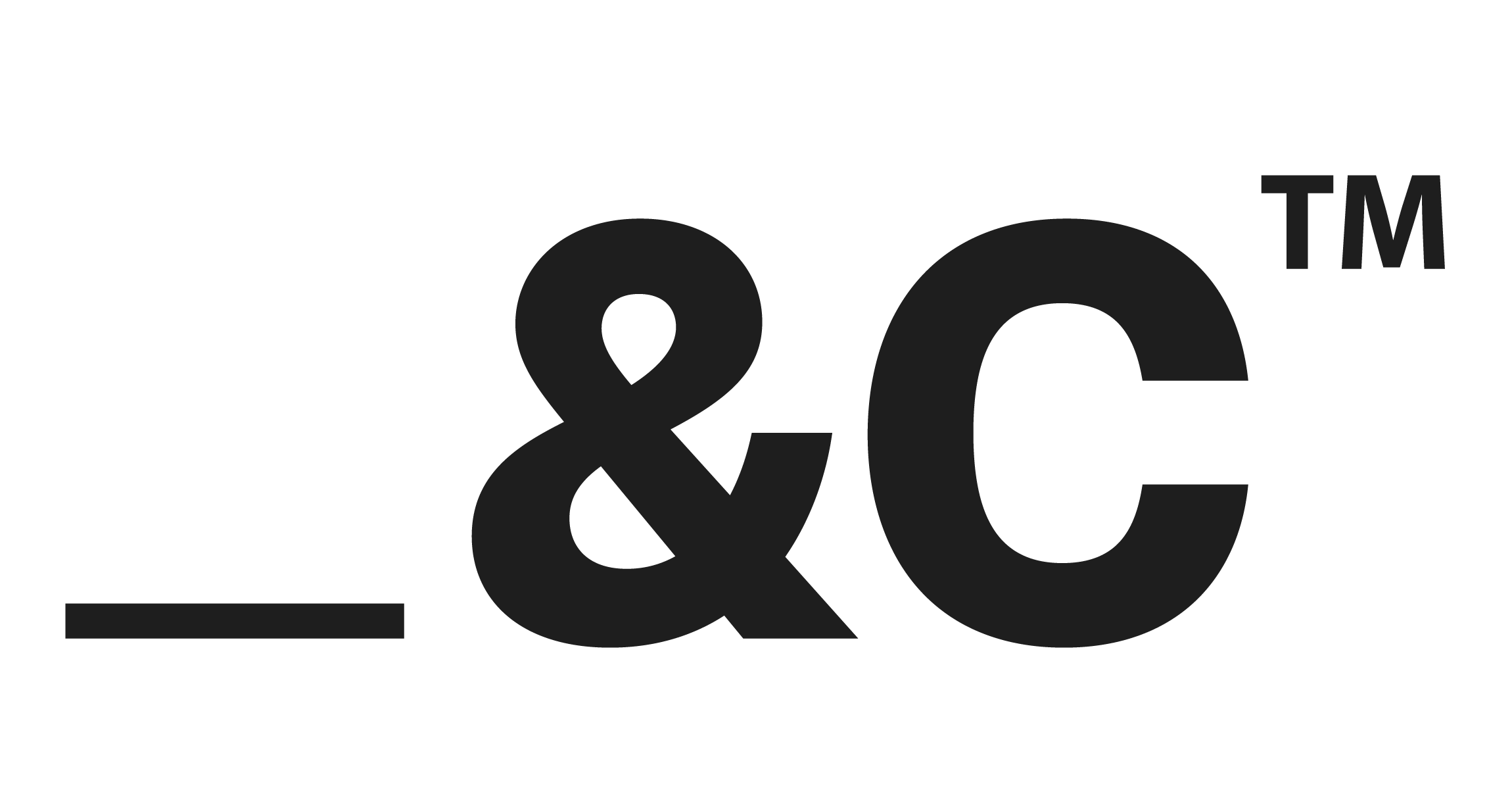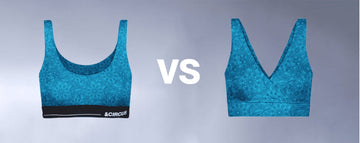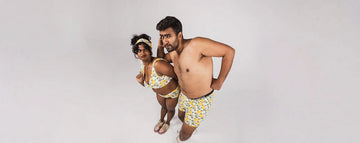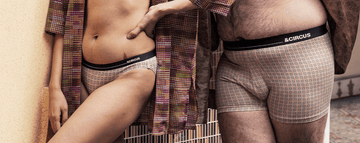Picture this: a bustling department store, racks overflowing with soft, breathable underwear that promises not just comfort but a lighter footprint on the planet. A new mom sifts through maternity bras, her fingers lingering on a tag that reads “100% biodegradable.” Nearby, a college student grabs a pack of boxer briefs, drawn by the words “compostable” and “micromodal.” This isn't a niche eco-boutique it's the new mainstream. As climate anxiety creeps into daily life, consumers are rewriting the rules of fashion, pushing brands to rethink everything from fabric to packaging. Nowhere is this shift more evident than in the intimate world of innerwear, where sustainability is no longer a buzzword but a demand.
Uncomfortable underwear shouldn't steal your confidence. At Andcircus, we craft ultra-soft, sustainable Lenzing Modal Micro® innerwear for every body, XS to 5XL. From briefs to bras, our custom packs fit you perfectly. Shop risk-free with our 100% satisfaction guarantee and embrace comfort that includes everyone. #LoveEveryBody. Shop Now!
How Shifting Consumer Preferences Are Reshaping Innerwear Markets
Across the globe, the push for sustainability is transforming industries, and fashion is no exception. The green packaging market, valued at USD 336.85 billion in 2024, is projected to soar to USD 564.58 billion by 2034, growing at a compound annual growth rate (CAGR) of 5.3%. This surge reflects a broader trend: consumers are demanding environmentally responsible products, and companies are scrambling to keep up. In the innerwear sector, eco-friendly materials like micromodal a plant-based, biodegradable fiber are gaining traction for their softness and sustainability. From men's boxer briefs to maternity nursing bras, brands are leaning into this shift, driven by shoppers who want their purchases to align with their values.
Europe led the green packaging market in 2024, with Asia Pacific poised for significant growth in the coming years. The food and beverage sector dominates, but apparel isn't far behind. Certifications like OEKO-TEX® and GOTS (Global Organic Textile Standard) are becoming must-haves, signaling to consumers that their clothes won't linger in landfills for centuries. Google searches for “biodegradable clothing” are spiking, and e-commerce platforms report a surge in filters for eco-friendly options. For Gen Z and new parents especially, sustainability isn't just a preference it's a dealbreaker.
From Fast Fashion to Circular Wardrobes
The days of synthetic, petroleum-based fabrics ruling the roost are numbered. The global biodegradable packaging market, valued at USD 495.78 billion in 2024, is expected to hit USD 921.95 billion by 2034, with a CAGR of 6.40%. In 2025 alone, it's projected to reach USD 527.51 billion. This growth mirrors a broader pivot toward biodegradable fibers like micromodal, TENCEL™, and bamboo, which break down naturally without choking ecosystems. The Asia Pacific region, which accounted for 43% of the biodegradable packaging market's revenue in 2023, is a hotbed for innovation, with brands experimenting with compostable labels and packaging to complement their eco-friendly garments.
Consumers are driving this change, fueled by growing awareness of textile waste over 92 million tons of it clog landfills annually. Younger shoppers, in particular, are ditching fast fashion for “circular wardrobes” that prioritize longevity and decomposition. A 25-year-old browsing for underwear isn't just looking for comfort; they're scanning for terms like “plant-based” and “zero waste.” Maternity wear, too, is seeing a green revolution, with nursing bras and postpartum garments increasingly made from biodegradable materials that cater to sensitive skin and eco-conscious minds.
Biodegradability in Action: Innerwear Goes Green
Walk into any modern retailer, and you'll see biodegradable innerwear stealing the spotlight. Brands like AndCircus are leading the charge, offering micromodal panties, boxer briefs, and nursing bras that blend luxury with sustainability. These garments aren't just soft they're designed to return to the earth without a trace. The global biodegradable plastics market, valued at USD 5.81 billion in 2024, is expected to reach USD 12.5 billion by 2035, with packaging leading the charge. In innerwear, this translates to compostable tags and wrappers that dissolve in backyard compost bins, leaving no plastic residue.
Influencers are amplifying the trend, with eco-conscious celebrities sporting biodegradable loungewear on social media. One brand's compostable maternity line went viral after a popular parenting influencer praised its comfort and ethics. Meanwhile, innovations like starch-based plastics projected to dominate the U.S. biodegradable plastic market, which hit USD 1,446.5 million in 2024 are making their way into innerwear packaging. By 2030, that market is expected to reach USD 2,522.1 million, growing at a CAGR of 9.7%. These advancements aren't just technical; they're reshaping how consumers view everyday essentials.
Not Without Hurdles: The Challenges of Going Green
But the road to a biodegradable future isn't without bumps. Producing micromodal or starch-based packaging costs more than traditional synthetics, and those costs often trickle down to consumers. Supply chains, too, pose challenges compostable materials require specialized facilities to break down properly, and not every town has one. Then there's the confusion: terms like “eco-friendly” and “sustainable” are tossed around loosely, leaving shoppers wary of greenwashing. A nursing bra might claim to be biodegradable, but if its elastic band lingers in a landfill, is it truly green?
Durability is another sticking point. Biodegradable fibers must balance softness and strength with the ability to decompose. A pair of boxer briefs that falls apart after three washes won't win hearts, no matter how eco-friendly it is. Brands are investing heavily in R&D to crack this code, but scaling up without sacrificing quality remains a hurdle. Still, the global sustainable packaging market, valued at USD 272.93 billion in 2023, is projected to hit USD 448.53 billion by 2030, with a CAGR of 7.6%. The plastics segment, which held over 43% of the market in 2023, shows that innovation is gaining ground.
Why Biodegradables Mean Better Business
For brands, going green isn't just about ethics it's smart business. Transparent sourcing builds trust, turning one-time buyers into loyal customers. In the maternity market, where comfort and safety are paramount, eco-friendly brands are seeing repeat purchases soar. Retailers are also feeling the pressure, with government mandates and consumer demand pushing for greener shelves. In Europe, which held over 36% of the sustainable packaging market in 2023, regulations are strict, and brands that comply gain a competitive edge.
Differentiation is key in a crowded market. A micromodal nursing bra with a compostable tag stands out against a sea of polyester blends. Wellness-conscious consumers, from new moms to eco-minded millennials, are willing to pay a premium for products that align with their values. AndCircus, for instance, has carved a niche by blending style, comfort, and sustainability, proving that biodegradable innerwear can be both practical and aspirational.
A Compostable Future If the Industry Listens
The future of fashion is compostable, but only if brands and consumers align. “Sustainability isn't a trend it's the new baseline,” says a sustainable fashion researcher from Parsons School of Design. The rise of biodegradable materials, from micromodal to starch-based plastics, signals a shift toward a circular economy where waste is designed out. Brands must invest in education, making it clear what “biodegradable” means and how to dispose of it properly. Visible certifications, like those from GOTS, can cut through the noise, while storytelling sharing the journey from tree to underwear builds emotional connections.
As the sustainable packaging market races toward USD 448.53 billion by 2030, the innerwear industry has a chance to lead. For brands like AndCircus, the message is clear: embrace biodegradability, or risk being left behind. Consumers aren't just buying underwear they're voting for a planet that can breathe a little easier. The question is, will the industry listen before the landfills overflow?
Frequently Asked Questions
Why are consumers shifting toward biodegradable products in fashion?
Consumers are increasingly prioritizing sustainability in their purchasing decisions, and biodegradable fashion goods offer a reduced environmental impact compared to synthetic alternatives. This shift is driven by growing awareness about plastic pollution, climate change, and the harmful effects of traditional textile production on ecosystems.
What materials are considered biodegradable in sustainable fashion?
Biodegradable textiles commonly include organic cotton, bamboo, hemp, Tencel (lyocell), and other plant-based fibers. These materials decompose naturally and reduce landfill burden, making them a preferred choice for eco-conscious shoppers looking for sustainable apparel options.
How does biodegradable clothing affect the fashion industry's sustainability goals?
Biodegradable clothing supports the fashion industry's move toward circularity and reduced waste. By promoting materials that naturally break down, brands are aligning with global sustainability goals, improving their environmental footprint, and appealing to a growing market of eco-aware consumers.
Disclaimer: The above helpful resources content contains personal opinions and experiences. The information provided is for general knowledge and does not constitute professional advice.
You may also be interested in: The Shift Toward Biodegradable Materials in Innerwear Manufacturing
Uncomfortable underwear shouldn't steal your confidence. At Andcircus, we craft ultra-soft, sustainable Lenzing Modal Micro® innerwear for every body, XS to 5XL. From briefs to bras, our custom packs fit you perfectly. Shop risk-free with our 100% satisfaction guarantee and embrace comfort that includes everyone. #LoveEveryBody. Shop Now!







































